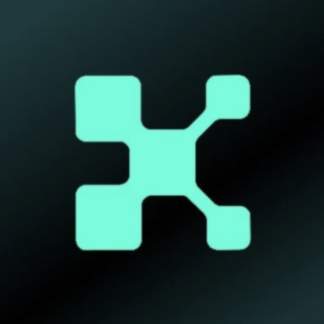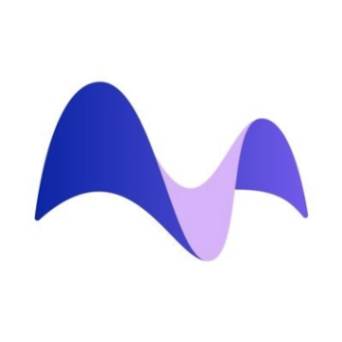Coin-related
Price calculator
Price history
Price prediction
Technical analysis
Coin buying guide
Crypto category
Profit calculator
What is Frax Share (FXS)?
Frax Share basic info
What is Frax Share?
Frax Share (also known as Frax Protocol) is a DeFi protocol on Ethereum. Founded in 2019 by Sam Kazemian, Jason Huan, and Travis Moore, Frax Protocol deploys the first partially collateralized and partially algorithmic stablecoin, known as FRAX. Unlike traditional stablecoins, which are either fully collateralized by fiat or algorithmically stabilized, Frax introduces a fractional-algorithmic approach, giving it unique capabilities. The primary objective is to offer a new form of cryptocurrency that is decentralized, scalable, and algorithmically managed to replace digital assets with a fixed supply, like Bitcoin.
The FRAX stablecoin of Frax Protocol currently exists on 7 chains, namely Ethereum, Polygon, Avalanche, BNB Chain, Fantom, Harmony, and Moonriver.
Resources
Official Documents: https://docs.frax.finance/
Official Website: https://frax.finance/
How does Frax Share work?
The Frax Protocol operates with a dual-token system: FRAX, the stablecoin, and FXS, the governance token. These two tokens are interconnected in a complex web, where their supplies, collateral ratios, and prices are dynamically adjusted using algorithms. The protocol uses the time-weighted average of Uniswap pair prices and the ETHUSD Chainlink Oracle to influence the price and collateral backing of FRAX.
If FRAX trades above $1, the protocol will automatically decrease the collateral ratio, making it more algorithmic. On the other hand, if FRAX trades below $1, the protocol increases the collateral ratio to restore its peg. This dynamic mechanism ensures that FRAX maintains its peg to the US dollar while adapting to market conditions, thereby fulfilling its claim as the "only algorithmic stablecoin to have never lost peg."
What is Frax Share Token (FXS)?
FXS or Frax Shares serve as the governance token in the Frax ecosystem. They are pivotal in deciding the protocol’s future through on-chain governance. FXS token holders earn fees, seigniorage revenue, and excess collateral value generated within the ecosystem. More than 60% of FXS supply is allocated to liquidity providers and yield farmers over several years, further decentralizing the protocol’s governance.
Which Factors Affect Frax Share Token (FXS) Price?
The price of the FXS token is influenced by a variety of factors:
- Demand for FRAX: As the stablecoin gains adoption, the demand for FXS, which governs the ecosystem, is likely to increase.
- Governance Decisions: Any decisions affecting the collateral ratios, fees, or integration onto new blockchains could impact FXS token value.
- Market Sentiment: Like any other crypto asset, FXS prices are also influenced by overall market sentiment and macroeconomic factors.
- Liquidity: Availability of FXS on multiple exchanges and liquidity platforms can affect its price stability and volume.
Frax Share's Impact on Finance
Frax Share stands as a paradigm shift in decentralized finance, introducing a new category of fractional-algorithmic stablecoins. Its unique model offers a scalable, decentralized, and adaptive financial instrument, which could set the standard for future stablecoins and even influence traditional financial systems.
Conclusion
In conclusion, Frax Share is a pioneering financial model that has the potential to redefine how we perceive value, stability, and governance in the financial and crypto markets. Its unique fractional-algorithmic approach places it at the forefront of stablecoin innovation, showing promising signs for the future of decentralized finance.
FXS supply and tokenomics
Uniqueness
The Frax Protocol is a community driven and unique design stablecoin. Over 60% of the supply of FXS is issued over a number of years to liquidity providers and yield farmers. It is an entirely decentralized protocol with governance onchain. It is also the first and only stablecoin to incorporate the fractional-algorithmic hybrid design at the time of its launch in November 2020.
Token utility
Before Frax launched in 2020, stablecoins that existed at the time were either collateral-backed or were minted and burned algorithmically. Collateralized stablecoins are not capital-efficient, while fully algorithmic stables are intrinsically fragile and are vulnerable to breakage in erratic market conditions. Frax Finance brings together the best of both worlds, eliminating their issues to produce the first fractional-algorithmic stablecoin protocol.
The project, which started in May 2019, was formerly called Decentral Bank and is founded by Sam Kazemian, Travis Moore, and Jason Huan. Since its launch, FRAX has had its supply partially backed by collateral and the rest of the supply left floating. The amount of supply that is backed is based on the collateral ratio of the protocol.
Frax Finance is a two-token protocol made up of FRAX the stablecoin and Frax Shares which is its governance token. This structure is optimised to maintain the fiat peg stability, accrue seigniorage fees, and empower community members with governance rights. The protocol also makes use of a pool contract that holds USDC collateral. Further to the two-token model, the algorithm behind the minting and redemption of FRAX relies on interacting with the FXS token. For example, a collateral ratio of 75% would mean a newly minted FRAX of $1 value will be backed by $0.75 in a stablecoin asset, and $0.25 of Frax Shares will be burnt. At all times, the amount of FRAX minted would always be equivalent to the amount of value committed to protocol, either as collateral or by interacting with FXS.
Frax v1 is the first iteration of the fractional algorithm used to create FRAX. The protocol uses fully on-chain oracles to obtain the prices of FRAX, FXS and collateral. The Uniswap oracle provides the time-weighted average prices of ETH, USDT and USDC while the Chainlink oracle provides the USD price. The v1 algorithm is essentially a banking algorithm that adjusts its collateral ratio (akin to a bank's balance sheet ratio) according to market forces, evidenced by arbitrage trades that occur on the FRAX and FXS tokens.
In March 2021, Frax v2 was launched, introducing the concept of Algorithmic Market Operations controllers (AMOs) as lego pieces to build and enact fully autonomous monetary policies on the Frax protocol. These AMOs would run on the foundation of the base stability mechanism conceptualized in Frax v1. At the time of writing, four AMOs are fully implemented and currently utilize the protocol's capital assets more efficiently, thus accruing even more value to FXS holders. Two more AMOs are currently in development and have to pass through the protocol's decentralized governance process before implementation.
Frax's founder, Sam, has announced the development of a crypto native Consumer Price Index (CPI). The proposed CPI will have its own native stablecoin (Frax Price Index) and governance token (Frax Price Index Shares). The new product will enable FRAX to break free of the USD peg and become the first truly decentralized and permissionless crypto native unit of account. Holders of the new FPI token will experience an increase in the dollar-denominated value of their holdings every month. Hence, the FPI also seeks to serve as a hedge against inflation.
Links
What is the development prospect and future value of FXS?
The market value of FXS currently stands at $139.06M, and its market ranking is #289. The value of FXS is not widely recognized by the market. When the bull market comes, the market value of FXS may have great growth potential.
As a new type of currency with innovative technology and unique use cases, FXS has broad market potential and significant room for development. The distinctiveness and appeal of FXS may attract the interest of specific groups, thereby driving up its market value.
Is FXS worth investing or holding? How to buy FXS from a crypto exchange?
How to get Frax Share through other methods?
What is Frax Share used for and how to use Frax Share?
Learn about other cryptos






](https://img.bgstatic.com/multiLang/coinPriceLogo/67ed7be8f262c244d679ed8cc27f36091710435785085.png)








































